Oregon-based graphic designer and painter J. S. Weis thinks the world wasn’t necessarily made for us. “Humans just got a little luckier when evolution handed out biological goodies,” the artist explains. “The story of people is interwoven with nature’s story, and you cannot separate the two.” His artwork, then, is a detailed, sometimes surrealistic exploration of creatures and the natural world—with nods to the human impact on these spaces. Although his work spans all kinds of flora and fauna, here he explains his particular connection to the ocean’s denizens.
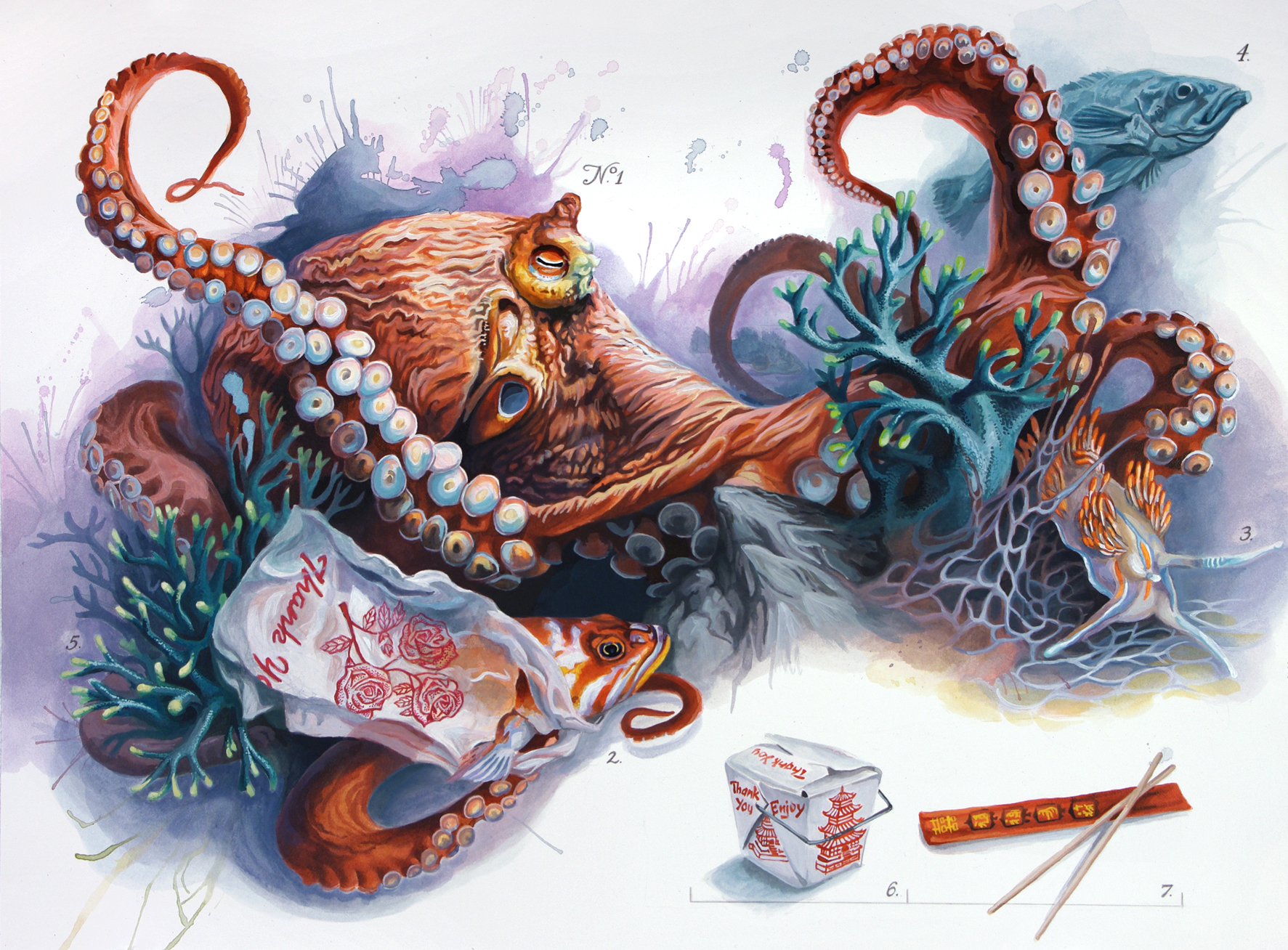
How long have you been an artist? How would you describe your work and your artistic background?
After graduating in 2005 from James Madison University with a B.F.A., I made ends meet working as a graphic designer (and still do). I paint and ponder in my spare time. My first gallery show was in 2014 at 1AM Gallery in San Francisco: a solo show called Liquid Hymn.
My current body of work is unNaturalist, in which I’m negotiating my feelings of humor, hope, and cynicism in a space populated by flora, fauna, and trinkets of consumer culture. I’m asking myself what our material comfort costs us, and whether we would make the same choices if we knew the true impact of our collective everyday decisions.
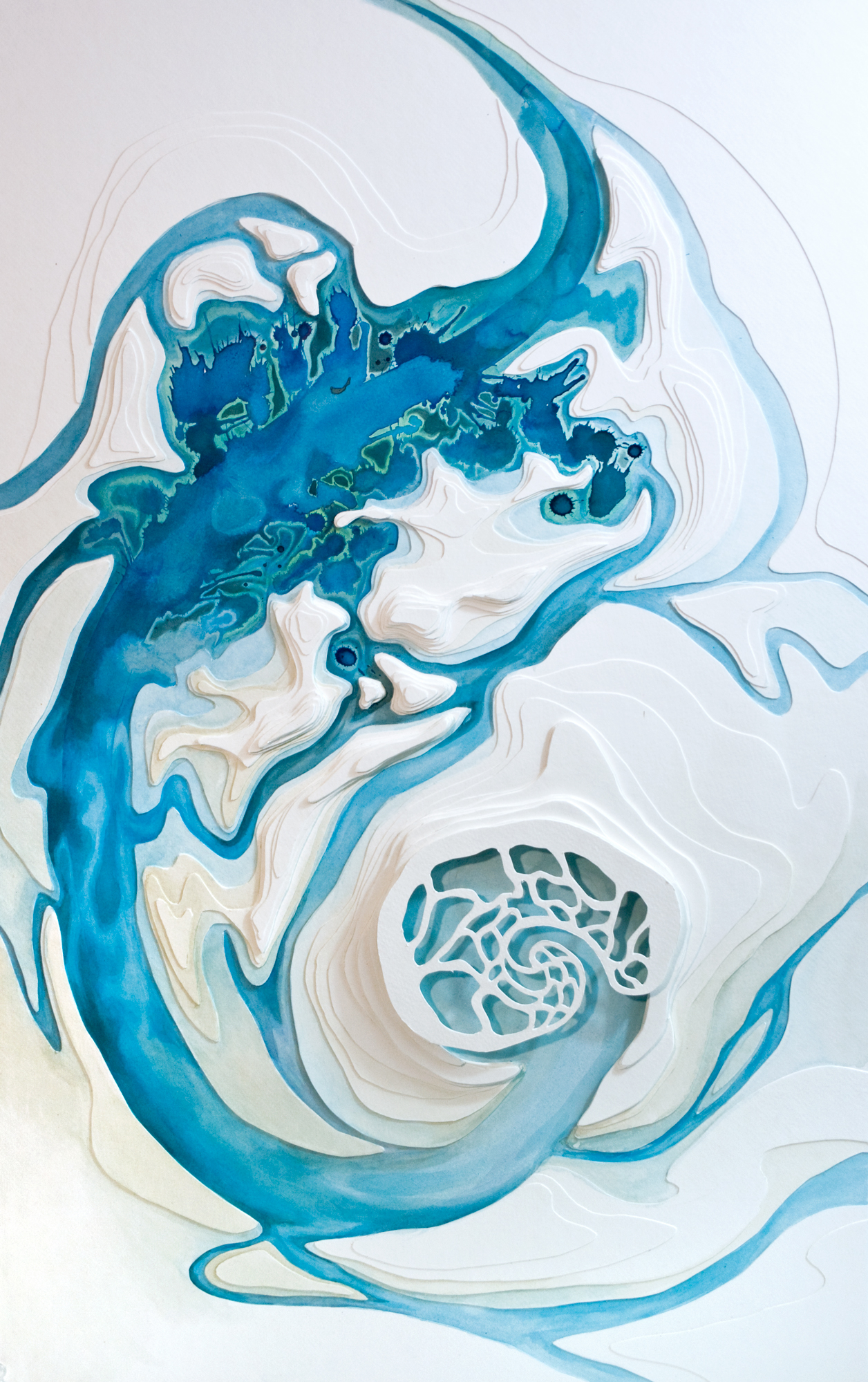
What sparked your mission to raise awareness through your art? Is there a particular moment or realization that inspired you to focus on the relationship between the natural and built environments?
In my early 20’s I took a trip to Puerto Rico and stayed near the El Yunque rainforest. There was a party beach nearby and I went snorkeling in the small sheltered bay. Strewn over the beach were beer cans, flip-flops, snack bags, and other discarded or forgotten items. Even in the water I remember seeing sneakers snagged in the rocks and coral. Despite that, it was a beautiful experience. I swam out to the deeper parts and came across three Atlantic squid, which looked at me in unison with their huge cartoony eyes. Rather than dart away, they circled me as I circled them, always keeping me in their line of sight. The squid seemed curious, and I felt the sensation of an alien intelligence sizing me up.
This reinforced a feeling in me that the world was not made for us. Humans just got a little luckier when evolution handed out biological goodies: big brains, opposable thumbs, and a penchant for teamwork. Maybe under a different set of circumstances cephalopods would have evolved to be earth’s eggheads. Reversing roles, leisurely octopus would be tossing their leftovers onto the shores of their getaway destinations, where Neanderthals would scoop up the indecipherable artifacts and puzzle over their meaning. Meanwhile, deep under the ocean 8-armed philosophers would debate our ancestor’s value, whether it is in fact intrinsic, or merely a resource to be tapped for industry and exploitation.
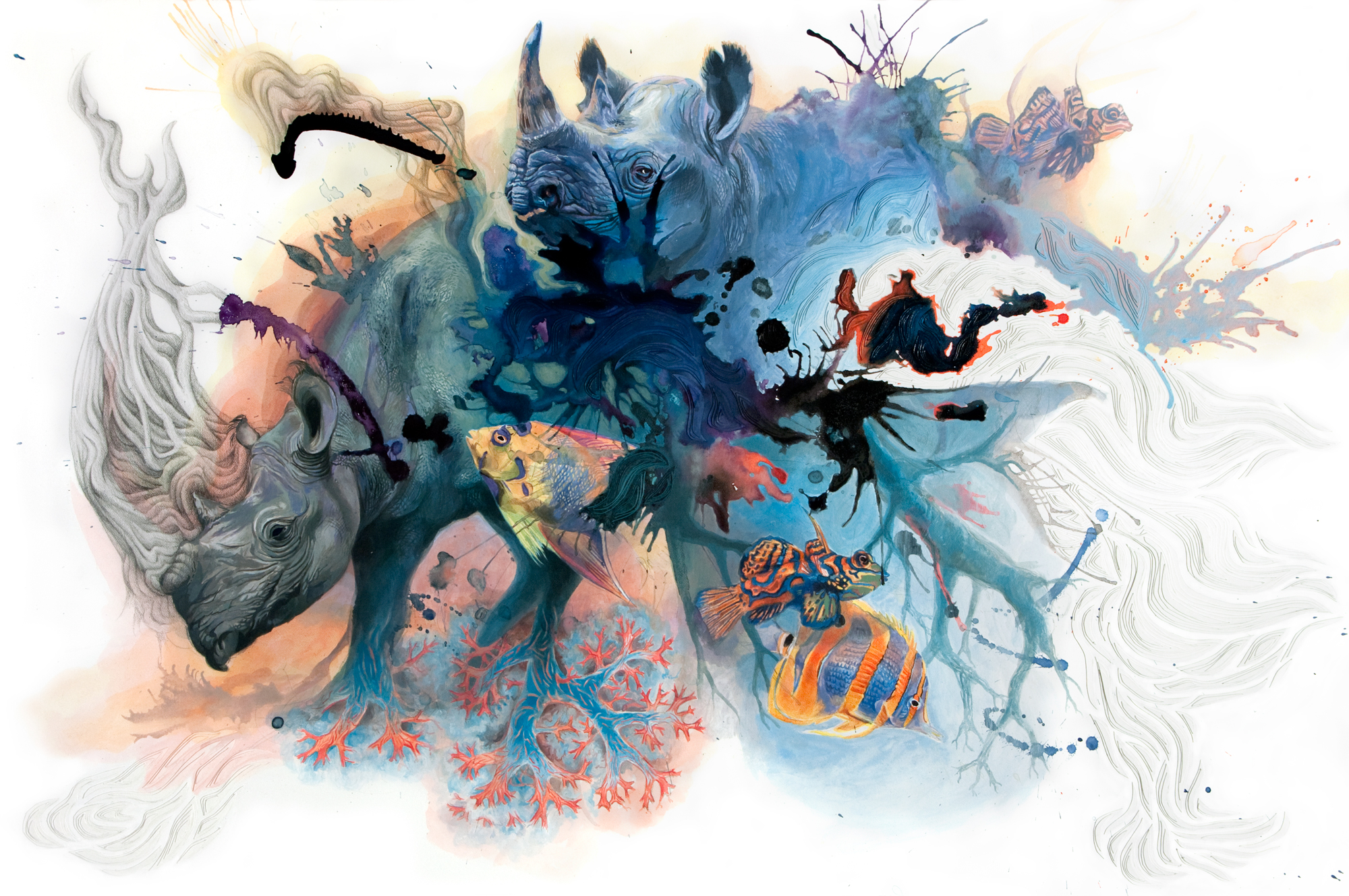
What’s your process like? How do you find inspiration, how long does a piece take, and when do you determine it’s complete? Where is your work displayed?
I never feel uninspired. The world is far too interesting. What’s been more challenging for me is staying focused on an idea and being patient with the process of refining the thought behind it. I get frustrated when my technique hasn’t caught up to what I see in my head, because there is so much to explore.
A piece can take a long time, ranging from 30 to 100 hours. Even then, they never seem finished. We’ve probably all heard da Vinci’s quote, “Art is never finished, only abandoned.” This resonates with me. I’m a detail-oriented person, and the world is full of infinite detail and variation. I can drive myself crazy trying to get every wrinkle, hair, shadow, and highlight to ring true, and it can feel like falling down the rabbit hole trying to articulate the fullness of life. But I do believe there are secrets in the small details and greater truths can be divined from their patterns, so it’s ultimately a rewarding, if maddening, experience.
I’ve been working with these wonderful galleries lately: Modern Eden (San Francisco, CA), Geoffrey Young (Great Barrington, MA), and Antler (Portland, OR).
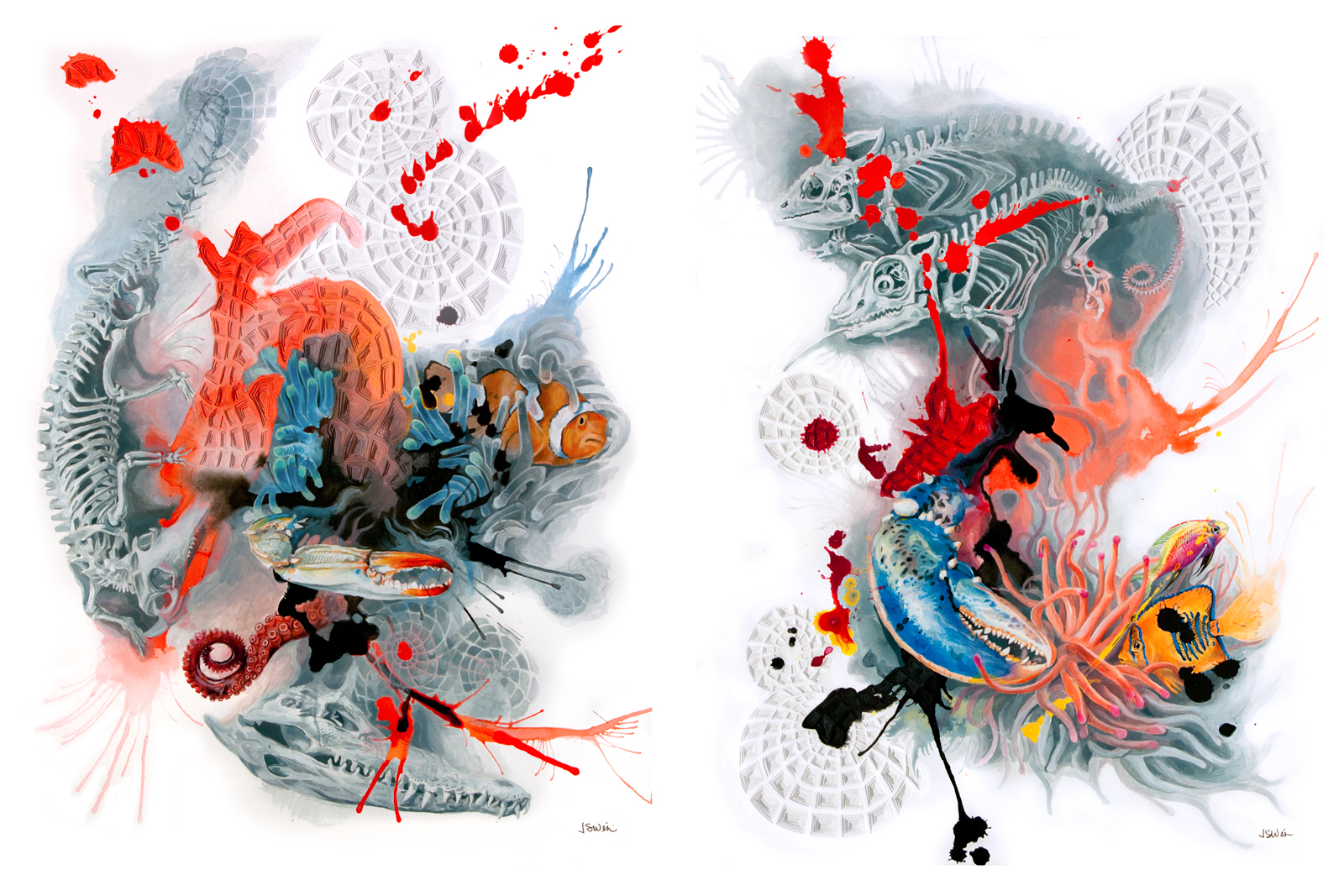
Is there anything specific about ocean/water subjects that speaks to you as an artist?
When I visit the ocean, I always think about the immense space it fills. So much of it is hidden under the surface. It’s so mysterious: the home of life. I’m especially drawn to the deep ocean and the strange creatures that live in perpetual, pressurized darkness. It speaks to the tenacity of life to hold on and adapt. I find it to be a very hopeful thought.
What reaction would you like people to have to your work – and what message do you want them to take away?
The work isn’t mine once it’s done. People can think whatever they want, and it’s all equally valid. But I can offer a few thoughts on the direction I hope we move as a species, and I’d consider myself fortunate if a shadow of this sentiment was contained in the work.
The story of people is interwoven with nature’s story, and you cannot separate the two. The great majority of people are struggling just to make ends meet. If they do lift themselves out of a hand to mouth existence, the effort of doing so and the stress of maintaining that standard of living for themselves and their families can be so relentless that we’re all looking for respite. I think our culture encourages us to seek comfort in consumerism and escapist entertainment, things that enrich us spiritually only insofar as we can share them with others. But they aren’t necessary, just props and occasions for us to interact. The real story is that we are all seeking to be worthy of love, both from the people around us and from ourselves. It’s only the lack of love that can make us truly impoverished.
What nature has taught me is that we are OK just the way we are. It is beautiful as it is. We can all slow down and quit chasing someone else’s vision of what the world should be. We are only forced into a life of complicity for lack of imagination and fear of change. Martin Luther King Jr. said, “The arc of the moral universe is long, but it bends towards justice.” I hope that we expand our definition of justice to include more than the rights of people, because the world is home to more than just people. If we diminish the majesty of our world, if we push it until it’s barely holding on to enrich a few short lifetimes, then we diminish the chances of a future society to realize that perennial human dream of living together in peace and prosperity.
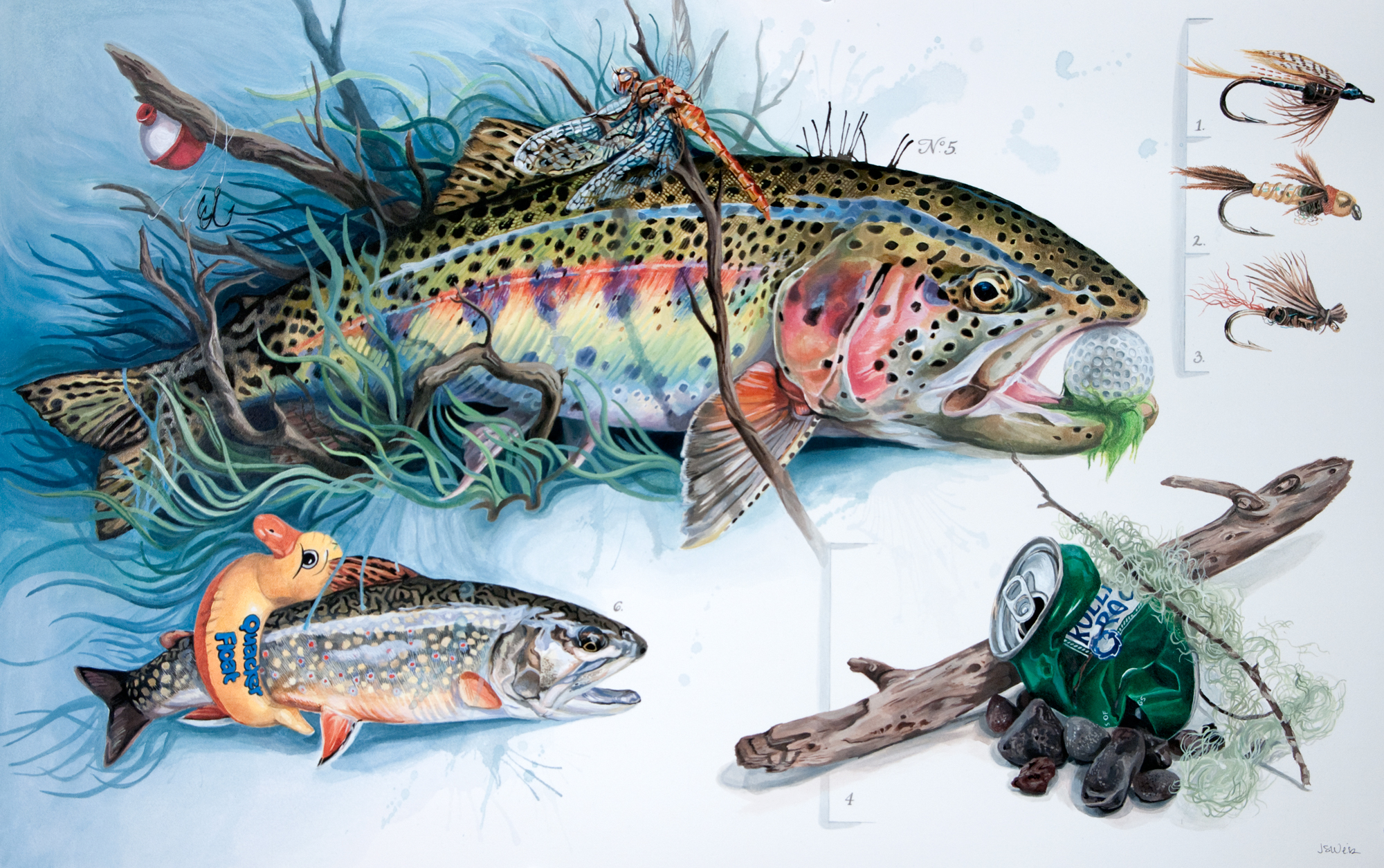
Learn more about J.S. Weis at jsweisart.com, or follow him on Instagram.